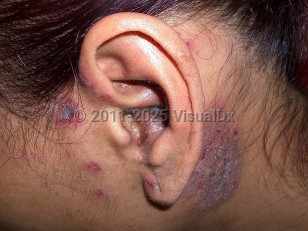Kikuchi-Fujimoto disease (KFD), also known as Kikuchi disease or histiocytic necrotizing lymphadenitis, is a rare condition presenting with fever, tender lymphadenopathy (typically posterior cervical), and occasionally a rash on the face, upper extremities, or trunk.
The condition is most common in young adults (under age 30) of Japanese and other Asian descent, although cases in all ethnic groups have been reported. Children can also be affected.
The cause of KFD is not known. There have been proposed associations with viral infections such as Epstein-Barr virus (EBV). Associations between KFD and systemic lupus erythematosus (SLE) – with KFD sometimes preceding diagnosis of SLE – have also been reported. Human leukocyte antigen (HLA) class II alleles (HLA-DPA1 and HLA-DPB1) in KFD patients are more frequently present than in the general population.
KFD is self-limited and typically remits spontaneously in 1-4 months in most patients.
Kikuchi-Fujimoto disease
Alerts and Notices
Important News & Links
Synopsis

Codes
ICD10CM:
I88.1 – Chronic lymphadenitis, except mesenteric
SNOMEDCT:
127217009 – Histiocytic necrotizing lymphadenitis
I88.1 – Chronic lymphadenitis, except mesenteric
SNOMEDCT:
127217009 – Histiocytic necrotizing lymphadenitis
Look For
Subscription Required
Diagnostic Pearls
Subscription Required
Differential Diagnosis & Pitfalls

To perform a comparison, select diagnoses from the classic differential
Subscription Required
Best Tests
Subscription Required
Management Pearls
Subscription Required
Therapy
Subscription Required
References
Subscription Required
Last Reviewed:11/19/2020
Last Updated:12/03/2020
Last Updated:12/03/2020
Kikuchi-Fujimoto disease

